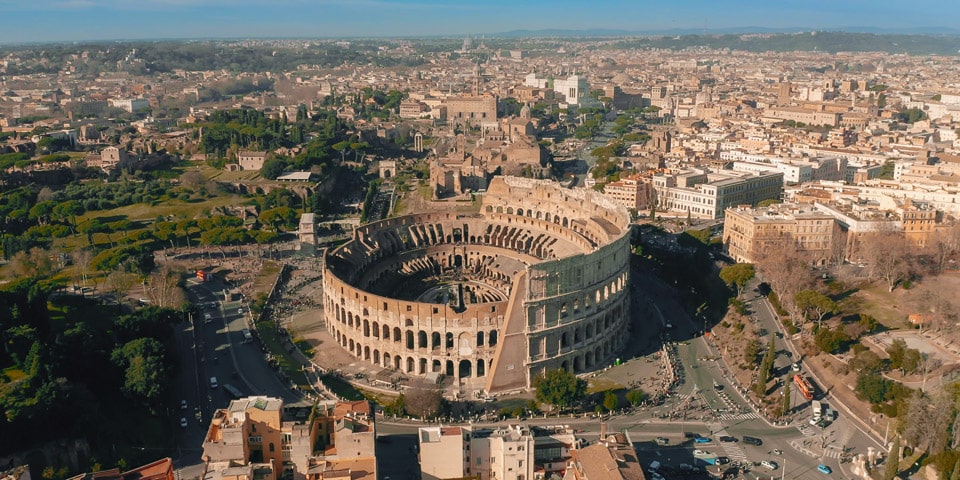

24786 views

Rome, often referred to as the “Eternal City,” is famous for a myriad of reasons. Its history spans two millennia, and its influence has touched countless aspects of art, architecture, religion, politics, and culture. Here are some undeniable facts and examples of what Rome is renowned for:
Contents
ToggleWith over two millennia under its belt, Rome is a monumental cornerstone of Western civilization. It was the birthplace of the Roman Empire, which once spanned three continents and became a melting pot for trade, culture, and knowledge. Its societal structures, political strategies, and cultural norms laid the foundations for future European civilizations, shaping their developmental paths.
A marvel of ancient engineering, the Colosseum stands as a symbol of Rome’s imperial might. Beyond its impressive size and spectator capacity, its intricate underground chambers, known as the hypogeum, housed gladiators and wild beasts.
With a complex system of elevators and pulleys, these combatants were raised to the arena floor, turning the amphitheater into a dynamic stage for life-and-death spectacles.
Vatican City, enveloped by Rome’s borders, is the smallest independent state in the world. Beyond its religious significance, it is also an art and architecture treasure trove.
The Vatican Museums, for instance, are home to an immense collection of artworks acquired by the Roman Catholic Church over centuries. Every corner of this city-state exudes spirituality, art, and history.
The remnants of ancient Rome provide a tactile connection to the past. The Roman Forum was the epicenter of civic life, where senators debated, and citizens socialized.
Palatine Hill, overlooking the Forum, was where emperors built palatial homes. With its oculus pouring in light, the Pantheon remains a marvel, not only for its architectural ingenuity but also as a testament to Rome’s cosmopolitan spirit, having been repurposed through time.
Read tips What to see in 3 days in Rome.
Rome, during the Renaissance, became a magnet for artists and thinkers. The city experienced a rebirth as popes and wealthy patrons commissioned artworks to beautify it. The Villa Borghese, for example, houses a collection of sculptures, paintings, and antiquities.
The Galleria Borghese, located within, has works by Titian, Caravaggio, and Bernini, making it a microcosm of Rome’s artistic wealth.
Explore also Guide to Borromini’s Masterpieces in Rome.
Water has always been vital to Rome. The ancient aqueducts, like Aqua Claudia and Anio Novus, brought fresh water from distant sources.
This engineering marvel didn’t just end at the water supply. It extended into public fountains, such as the Fountain of the Four Rivers in Piazza Navona, designed by Gian Lorenzo Bernini, serving both practical and aesthetic purposes.
Roman cuisine is a flavorful dance between rustic traditions and regional ingredients. Dishes like cacio e pepe, a simple yet flavorful pasta, or porchetta, a savory roasted pork, tell stories of regional agricultural abundance. Moreover, the region’s wines, especially from the vineyards of Frascati, add another dimension to Rome’s culinary landscape.
Read about 10 Famous Dishes of Roman Cuisine.
Roman law, codified in the Twelve Tables and later in the Justinian Code, has left an indelible mark. Concepts like “innocent until proven guilty” originated here. Roman law’s reach extends beyond its borders, with its principles still echoing in the halls of modern legal institutions.
The repercussions of the Latin language are felt far and wide. While it’s the liturgical language of the Roman Catholic Church, it also laid the linguistic foundation for an entire family of languages.
Its terminologies pepper academic discourses and its maxims and proverbs are interwoven into the fabric of Western thought.
The iconic seven hills have played host to some of Rome’s most significant events.
From the legendary tale of Romulus and Remus on Palatine Hill to the grand temples on the Capitoline, these undulating terrains have witnessed Rome’s evolution from a small settlement to an empire.
Literary luminaries from Rome have bequeathed a rich heritage. Writers like Seneca offered wisdom on Stoicism, while poets like Horace and Catullus gave insights into daily life and emotions. Beyond their literary merit, these writings offer a nuanced view of Roman society.
Rome’s intricate catacombs bear testimony to early Christian communities. Adorned with frescoes, these underground burial chambers shed light on early Christian art and practices.
The Basilica of San Clemente, spanning multiple layers, traces the journey of Christian worship from a Roman house to a grand basilica, encapsulating Rome’s religious evolution.
Rome stands as a beacon of history, art, and civilization. Its Colosseum, Vatican City, and ancient ruins narrate tales of emperors, spirituality, and innovation. The city’s contributions, from Renaissance masterpieces to foundational legal concepts, resonate globally. With its rich cuisine and literary genius, when one ponders what Rome is “famous for,” the breadth of its influence is undeniable. In essence, Rome’s greatness emanates from its landmarks and its enduring impact on the tapestry of humanity.
Author: Artur Jakucewicz
This website uses cookies. For more info read the cookies policy
Rome.us © 2025. Created with love by Roman experts and guides.